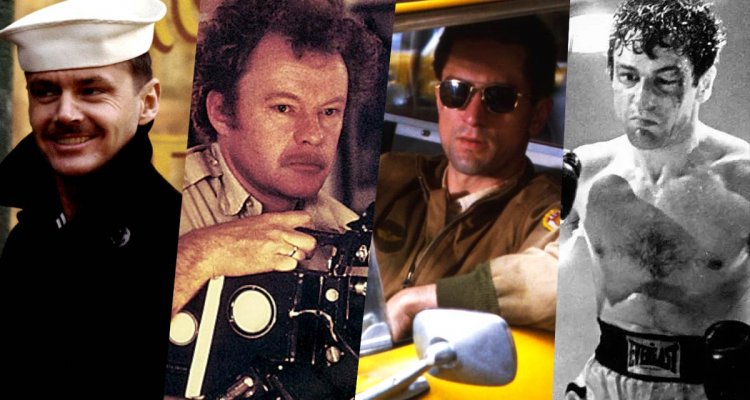“I remember when ‘Taxi Driver’ came out and Michael became known as a ‘poet of the streets’—I think that was the wording, and it seemed right to me. Michael was the one who really controlled the visual palette of ‘The Last Waltz,’ and on ‘Raging Bull’ he and his team met every single challenge—and there were so many. One of the greatest of those challenges was shooting in black and white, which Michael had never done before, a fact that still astonishes me. His relationship with the camera and the film that was running through it was intimate, mysterious, almost mystical. He was a great artist, and it saddens me that I won’t get to see him again.” – Martin Scorsese on the passing of Michel Chapman.
The world lost a giant on September 20, 2020, when veteran cinematographer Michael Chapman passed away from congestive heart failure. He was 84 years old. By all accounts, Chapman died peacefully in his home; his wife was the first to break the news, via Twitter.
READ MORE: The Essentials: The Films Of Claire Denis
It is impossible to disregard the tremendous legacy and body of work that Michael Chapman left behind. As the visual mind behind New Hollywood classics like “Taxi Driver” and “Hardcore,” Chapman formed his own kind of punk-rock cinematographic language, one that was firmly in tune with the dangerous rhythms of the street. Before Hal Ashby’s “The Last Detail,” his first official credit, Chapman acted as a camera operator on a number of formative ’70s masterworks, including John Cassavetes’ “Husbands,” the paranoid masterpiece “Klute,” “Bad Company,” the first “Godfather” film, and, perhaps most prominently, Steven Spielberg’s “Jaws.” Chapman also got his sea legs shooting commercials and documentary works in the late ’60s, well before his career began in earnest in the ’70s.
All of this is another way of saying that Michael Chapman was a streetwise classicist, a spontaneous formalist, and truly, one of the best to ever do it. He shot films, directed films, acted in some of the films he shot, and ultimately acted as an ambassador for cinema until the day he died. He established a visual template that other cinematographers will be copying for years to come. To honor the memory of this late legend, let’s take a look back at ten of the late, great D.P.’s most noteworthy credits:
“The Last Detail” (1973)
There’s a muted but unmistakable sense of desperation about “The Last Detail,” Hal Ashby’s rough-hewn tragicomedy about two charming Navy boors who want to give their friend one last taste of life’s delights before he heads off to do an eight-year prison bid in Maine. The characters are oddball outlaws living on borrowed time, inhabiting an acrid working-class American environment that offers no shortage of earthly, illicit pleasures, but also no real promise of enlightenment or long-term satisfaction. To think that this is Chapman’s first major credit is kind of head-spinning: Chapman had been a camera operator on one of Ashby’s previous films, the very of-its-time comedy “The Landlord,” and with “The Last Detail,” the “Harold and Maude” director wanted to let this then up-and-coming young gun showcase what he could do. The result is a film that’s both immersive and naturalistic, infused with a documentary-like sense of verisimilitude (not an unusual stylistic choice for the 1970s), but also a patient and thoughtful awareness of when to simply sit back and observe the performers, who remain the true selling point of Ashby’s bluesy narrative experiment. “The Last Detail” doesn’t showcase Chapman at his flashiest, but as one of the essential texts of the New Hollywood movement, it’s a hell of a place for a cinematographer to get his start. – NL
“Taxi Driver” (1976)
It’s one of the most recognizable, chilling openings in movie history: as Bernard Hermann’s unnerving original score booms and distends, we, the viewer, become entrenched in a suffocating, neon-ensconced tableau that could be mistaken for nowhere else other than 1970s New York City. Smoke filters out from the gutters, as if rising up from hell itself, as all manners of loners and freaks prowl the trash-strewn streets. Welcome to the world of “Taxi Driver,” which locks viewers inside the troubled mind of one Travis Bickle: a disturbed, antisocial urban fringe-dwellers who is one bad day away from rising up and “washing all the scum off the streets.” Throughout his career, Chapman displayed an undeniable talent for capturing the grittier facets of the contemporary American experience, and “Taxi Driver” sees Chapman and frequent collaborator Martin Scorsese diving into the visual muck with fearless abandon. Chapman captures the lonely, liminal world of Scorsese’s landmark drama – a world of seedy flophouses, porno theaters, oppressively cramped apartments, and late-night rides to nowhere in particular – with a lyrical eye that, somehow, never manages to betray the intrinsic ugliness of what we’re seeing. It goes without saying that “Taxi Driver” is foundational work, and the visual influence that Scorsese’s picture had on everything from the early cinema of Nicolas Winding Refn to last year’s “Joker” can largely be attributed to Chapman’s contributions to the finished product. – NL

